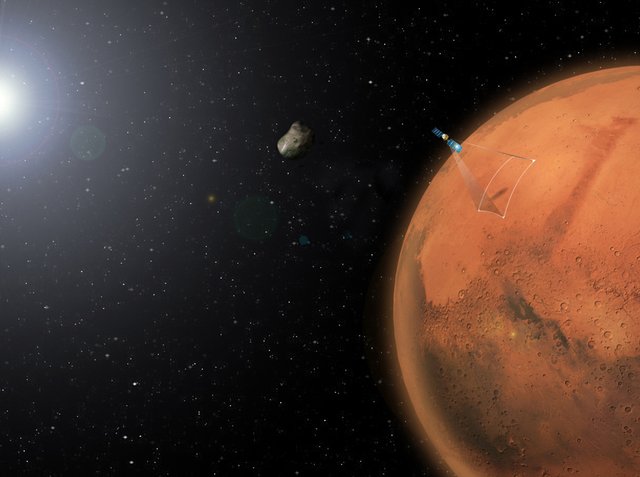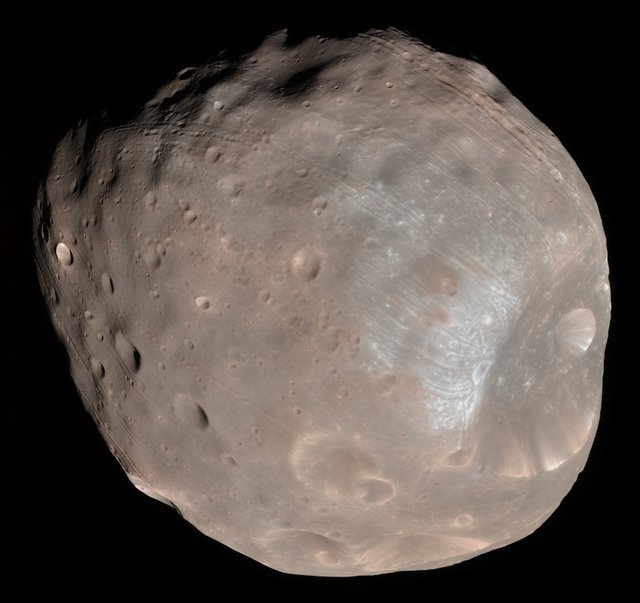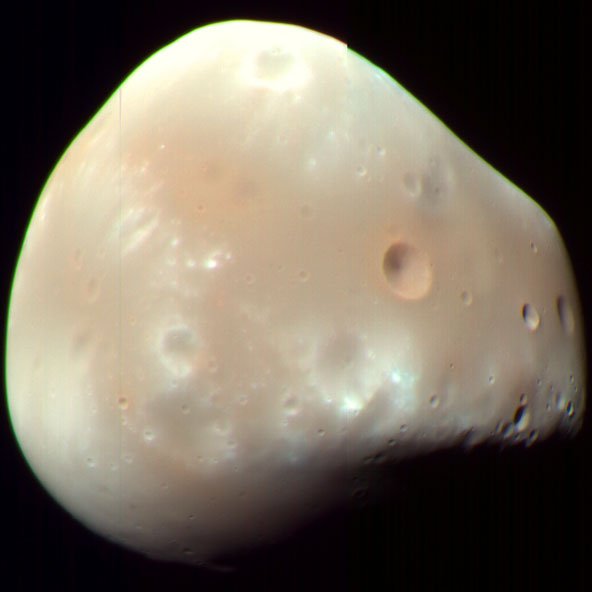Planetary moons #1 : Phobos and Deimos
I will describe you more interesting planetary moons. These little worlds are really interesting and full of secrets. Because the planet Mercury and Venus don't have their satellites, I start the story with a duet of Mars moons. Deimos and Phobos.

They are small, rocky objects with irregular shapes. Their surfaces are covered with craters after impacts of larger and smaller meteorites. Where did the two small moons of Mars come from? For a long time their shape indicated that they are asteroids captured by Mars. Newer theories say that they were created as a result of the collision of another asteroid with Mars. Both moons are similar in size.
Phobos

It's bigger and closer to the red planet. He was discovered 6 days after Deimos. Its dimensions are 26.8 × 21 × 18.4 kilometers. Like Deimos, it contains carbon and is a mixture of rocks and ice. The surface of Phobos is quite heavily covered with craters. The larger Martian satellite is the record holder of the entire Solar System in terms of the proximity of the planet around which it orbits. It will be destroyed after some time. The satellite is approaching Mars at a speed of about 1.8 meters per 100 years. For about 50 million years, Phobos will be destroyed. Mars viewed from Phobos surface would be 80 times larger and 2,500 times brighter than the full moon in the terrestrial sky! The red planet occupies almost 1/4 of the width of the sky seen on Phobos! Whereas the Phobos seen from Mars has 1/3 of the angular diameter of our Moon viewed from Earth. The satellite circulates Mars in less than 8 hours. So as you can see it is a small, but very dynamic world.
Deimos

A smaller and more distant moon than the red planet. It was discovered as the first of the two moons on August 12, 1877 by the American astronomer Asaph Hall. Deimos can be a former asteroid. This moon is not equal and has dimensions of 15 × 12 × 10 km. Research shows that it consists of rocks containing carbon (like most asteroids) and ice. The surface of Deimos is covered with craters to a lesser extent than with Phobos. The largest craters on this moon have a diameter of about 3 kilometers. Mars seen from this satellite is 31 times bigger and 400 times brighter than the view of our Moon on Earth! However, the surface of the red planet Deimos doesn't look impressive. It is like an ordinary, bright star in the Martian sky. The satellite circulates Mars in just over 30 hours.
Greetings to lovers of Astronomy!
Sources:
Moons of Mars
Phobos
Deimos
and my knowledge...
All rights reserved by @astromaniac 2018
Congratulations @astromaniac! You have completed some achievement on Steemit and have been rewarded with new badge(s) :
Click on the badge to view your Board of Honor.
If you no longer want to receive notifications, reply to this comment with the word
STOP